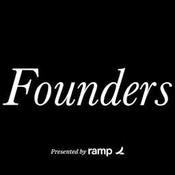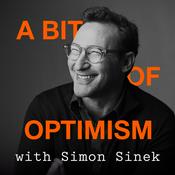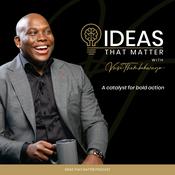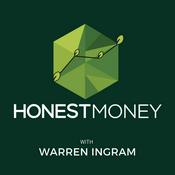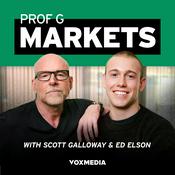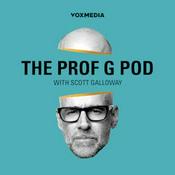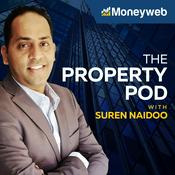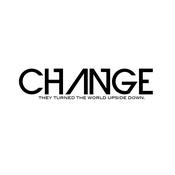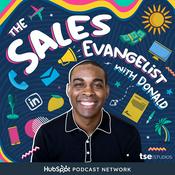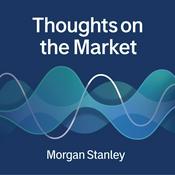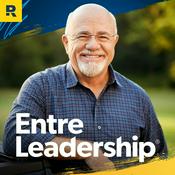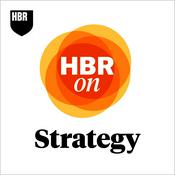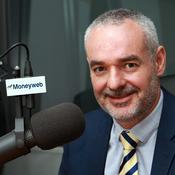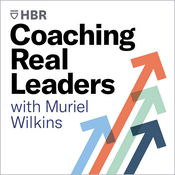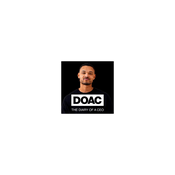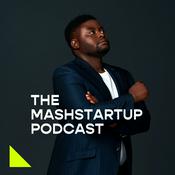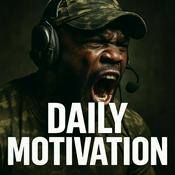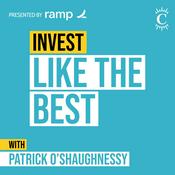49 episodes

The Journey from Copywriting to Strategic Narrative
2025/10/21 | 49 mins.
On this episode of The Smart IT Podcast, I welcomed Shawn Rolph, founder of Copycat, to the show to talk about creativity, resilience, and adaptation in the face of technological disruption. How does one bounce back from the AI rush when it disrupts your business model? and then turn around the innovate on other ways to provide value to the market and harness that same tech to support the new approach.We explored his company's journey from copywriting to strategic narrative.Shawn shared his journey with music began after a childhood injury that shattered his elbow. Playing guitar became a form of physical therapy that later influenced his creativity and problem-solving as an entrepreneur. Music, he explained, had always been central to how he and his business partner brainstormed ideas and tackled challenges.He described founding Copycat in 2017 as a small copywriting venture that scaled into a full-service agency supporting large firms with writing talent and creative content. However, the introduction of ChatGPT in late 2022 fundamentally disrupted the business. Within three months of the announcement, Copycat lost half its runway as clients shifted to experimenting with AI-generated content. Shawn reflected that AI’s first major use case was communication, and that businesses quickly began reassessing the value of human-created writing.Rather than resist the change, Copycat pivoted. Shawn saw that AI would flood every marketing channel with content, amplifying noise and sameness. This insight led to the creation of Copycat’s Strategic Narrative Framework, a storytelling-driven approach that helps brands rediscover authentic voice, alignment, and differentiation. Drawing inspiration from Hollywood writing rooms and world-building, Shawn’s team began facilitating in-person workshops to help companies clarify their villains, heroes, and worldviews.Our conversation explored the “premium on slow” emerging in an AI-accelerated world, highlighting how genuine creativity, intentional storytelling, and human interaction would soon become more valuable than speed. Shawn emphasized that true innovation required reflection, alignment, and collaboration, not just automation. Copycat eventually used AI not to replace creativity but to amplify decision-making, automate workflows, and create space for deep narrative work, while maintaining a strict boundary against using AI for generative writing.Shawn concluded that storytelling could be taught through frameworks and that today’s founders must become both builders and storytellers. Copycat now operates both as a narrative agency and as a storytelling-as-a-service platform, helping founders and teams align around a unified message that connects authentically with customers.We closed the episode by highlighting Shawn’s ability to transform disruption into opportunity, reminding listeners that when challenges strike, creativity, collaboration, and purpose are the keys to building what’s next.#smartit #story #copy #narrative #aiShow notes:🔹Link to this episode: https://youtu.be/QP-7QTlu96Q🔹Shawn on LinkedIn: https://www.linkedin.com/in/shawn-rolph/🔹Copycat: https://www.copycat.ink🔹The Smart IT Podcast YouTube Channel: https://www.youtube.com/@thesmartitpodcast🔹Captivate Website for all episodes: https://the-smart-it-podcast.captivate.fm/

Smart IT | Leadership
2025/10/14 | 56 mins.
On this episode of The Smart IT Podcast, I welcomed Melissa Marks to the show to explore what leadership really means in today’s workplace. From employee engagement and culture to navigating layoffs, leading through adversity, and integrating AI responsibly, Melissa shared practical wisdom and human-centered strategies for building stronger organizations.🔷 Smart IT - LeadershipThe conversation explored the idea that leadership is not about titles but about daily actions; whether parenting, caring for others, or stepping up in teams. Melissa described how remote work and Zoom created more equality by giving everyone a “front row seat,” allowing quieter voices to be heard. She stressed that leaders should foster unconditional love at work, supporting team members when they make mistakes rather than punishing them, because punitive cultures stifle growth and loyalty.We also discussed culture during adversity, such as economic downturns or layoffs. There is much that can be improved upon when it comes to the tendency of companies to abruptly reduce staff without transparency, leading to erosion of trust for those left behind. Melissa advocated for humane practices, early communication, and involving employees in problem-solving. She suggested that restructures often overlooked employee skills and innovative ideas that could save costs without losing talent.The conversation then shifted to AI in the workplace. Melissa, with her engineering and physics background, viewed AI as an exciting enhancement tool but not a replacement for human judgment, morality, or creativity. She noted that while AI could accelerate brainstorming and writing, it lacked the human accountability and ethical discernment needed in critical decisions. We both agreed that leaders must integrate AI thoughtfully, maintaining responsibility for outcomes rather than offloading it to technology.We closed with Melissa introducing her collaborative project, The ABCs of Leadership, a workbook guiding leaders through 26 behaviors to build high-performance, people-centered cultures. Leadership opportunities exist for everyone, regardless of title, and everyone is encouraged to embrace everyday chances to lead with vision and humanity.🔑 Key Takeaways✅ Why leadership is not about titles; it’s about daily actions, responsibility, and influence.✅ How to align people with purpose, transforming disengaged employees into engaged contributors.✅ The importance of unconditional love at work; supporting mistakes as learning opportunities rather than punishing them.✅ Why culture and transparency matter most during adversity and layoffs, and how humane communication sustains trust.✅ How to embrace AI as an enhancement tool while keeping humans accountable for ethics, creativity, and decision-making.✅ Many disengaged employees are “persuadable” if leaders intentionally connect them to the organization's vision.Melissa also shared insights from her upcoming book, The ABCs of Leadership, a workbook designed to help teams build 10/10 cultures where people feel seen, valued, and empowered; with cultures of engagement, accountability, and results.#SmartIT #Leadership #WorkplaceCulture #AI #EmployeeEngagementShow notes:🔹Link to this episode: https://youtu.be/ER8D8MBnr8Y🔹Melissa on LinkedIn: https://www.linkedin.com/in/melissa-j-marks/🔹Team Excellence: https://tinapauluskrause.com/teamexcellence/🔹The Smart IT Podcast YouTube Channel: https://www.youtube.com/@thesmartitpodcast🔹Captivate Website for all episodes: https://the-smart-it-podcast.captivate.fm/

Smart IT Workspace Construct - Sellers Perspective
2025/10/07 | 1h 5 mins.
On this episode of The Smart IT Podcast, I welcomed Keenan Coke to the show, where we explored the role of Business Development Representatives (BDRs) in modern sales and how they set the tone for customer relationships.🔷 Smart IT Workspace Construct - Sellers Perspective (BDR View)Keenan revealed why the BDR position is about more than just cold calls. It’s about starting conversations, building trust, and connecting prospects with the right experts. BDRs bridge the gap between sales, support, and product teams, ensuring customer needs are heard and acted on.He described how BDRs built trust by creating warm introductions, ensuring prospects spoke with decision-makers, and filtering out poor fits. We talked about the importance of human connection in sales, noting that even in an AI-driven era, customers still preferred personal conversations over bots.He cautioned that communication breakdowns between teams could cost deals, while proactive outreach, follow-ups, and partnerships kept customers engaged. Emotional connection and consistent customer experience build long-term commitment.Keenan argued that loyalty depended on continuous engagement, fast responsiveness, and taking customer feedback seriously.Finally, he reflected on his own path into BDR work, explaining that he chose it deliberately to sharpen his communication skills. Anyone interested in sales did not need a degree or certification, just the ability and desire to communicate effectively, qualify prospects honestly, and help customers solve real problems.🔑 Key Takeaways🔹 How proper qualification and disqualification saves time and strengthens the pipeline🔹 The importance of cross-team communication to prevent customer frustration🔹 The role of early adopters and brand loyalty in long-term success🔹 Why human connection still outperforms AI bots in building trust🔹 Why strong communication skills matter more than degrees or certifications in salesIf you’re in sales, product, or customer success; or just curious about how businesses grow through people-first connections, this episode is for you.💡 “The BDR role is about setting the tone for a lasting relationship.”#SmartIT #sales #BDRShow notes:🔹Link to this episode: https://youtu.be/i3rF3aTs7AA🔹Keenan on LinkedIn: https://www.linkedin.com/in/keenan-coke/🔹The Smart IT Podcast YouTube Channel: https://www.youtube.com/@thesmartitpodcast🔹Captivate Website for all episodes: https://the-smart-it-podcast.captivate.fm/

Innerhive Demo - From Frustration to Action: Putting Tech to Work to Help People
2025/9/30 | 39 mins.
From Frustration to Action: Putting Tech to Work to Help People - Innerhive DemoOn this episode of The Smart IT Podcast, I welcomed Crystal Gallo back to the show to walk me through the Innerhive solution.This is the full demo. https://lnkd.in/grVz8kk5🔷 From Frustration to Action: Putting Tech to Work to Help People#SmartIT #innerhive #caregiving Production: Brilliant Beam MediaShow notes:🔹Link to this episode: https://lnkd.in/grVz8kk5🔹Crystal on LinkedIn: https://www.linkedin.com/in/crystal-gallo/🔹Innerhive Website: https://www.innerhive.com/🔹Innerhive LinkedIn Page: https://www.linkedin.com/company/innerhive/🔹Try out Innerhive today. Use Promo Code for 3 months of premium access: BuildYourHive🔹The Smart IT Podcast YouTube Channel: https://www.youtube.com/@thesmartitpodcast🔹Captivate Website for all episodes: https://the-smart-it-podcast.captivate.fm/

From Frustration to Action: Putting Tech to Work to Help People
2025/9/23 | 1h 1 mins.
On this episode of The Smart IT Podcast, I welcomed Crystal Gallo to the show.She is the founder of Innerhive, whose mission is to end caregiver burnout. The solution was born from her personal experience navigating the overwhelming and emotional journey of caring for loved ones with medical issues.🔷 From Frustration to Action: Putting Tech to Work to Help PeopleWe discussed the challenges faced by caregivers. Many people don’t even recognize themselves as caregivers, despite the fact they are taking on emotional, logistical, medical, and financial responsibilities. Crystal emphasized that caregiving is often invisible and stigmatized, especially in workplace settings. She talked about the need for collaboration, community engagement, and the emotional aspects of caregiving.She walked through the everyday chaos of trying to coordinate care, manage medical information, and communicate with family members. Crystal explained how Innerhive was designed to serve as a second brain for caregivers, using smart technology to:🔹 Record and transcribe medical visits🔹 Extract action items and follow-ups🔹 Organize information across appointments, medications, and providers🔹 Centralize community of supportShe highlighted how technology could be leveraged to make information digestible, shareable, and emotionally supportive, rather than overwhelming. We discussed the massive scale of the caregiving problem, with millions entering caregiver roles due to aging populations.Crystal called for a cultural and systemic shift, much like society previously embraced childcare support for working parents, to now include elder care.Innerhive has turned the painful experience of some many caregivers into a meaningful solution to support real people's needs.🔑 Key Takeaways🔹Real-world problems inspire innovative solutions🔹Caregivers face significant challenges and burnout🔹Communication and collaboration is key in caregiving situations🔹The healthcare system has systemic issues that need addressing🔹Building a supportive community is essential for caregivers🔹Emotional support is crucial for caregivers' well-being🔹Innerhive aims to simplify caregiving through providing a second brain#SmartIT #innerhive #caregiving #technology #healthcare #communitysupport #innovation #caregiverchallenges #emotionalsupport #Innerhive #peoplecentricity #peoplecentricinnovationProduction | Brilliant Beam Media, Syya YasotornratShow notes:🔹Link to this episode: https://youtu.be/MIRgxdO4IvM🔹Crystal on LinkedIn: https://www.linkedin.com/in/crystal-gallo/🔹Innerhive Website: https://www.innerhive.com/🔹Innerhive LinkedIn Page: https://www.linkedin.com/company/innerhive/🔹Try out Innerhive today. Use Promo Code for 3 months of premium access: BuildYourHive🔹The Smart IT Podcast YouTube Channel:
More Business podcasts
Trending Business podcasts
About The Smart IT Podcast
Listen to The Smart IT Podcast, Build with Leila Hormozi and many other podcasts from around the world with the radio.net app
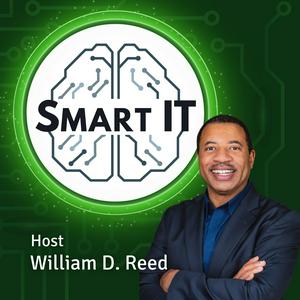
Get the free radio.net app
- Stations and podcasts to bookmark
- Stream via Wi-Fi or Bluetooth
- Supports Carplay & Android Auto
- Many other app features
Get the free radio.net app
- Stations and podcasts to bookmark
- Stream via Wi-Fi or Bluetooth
- Supports Carplay & Android Auto
- Many other app features


The Smart IT Podcast
download the app,
start listening.

